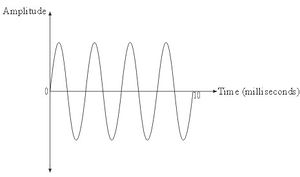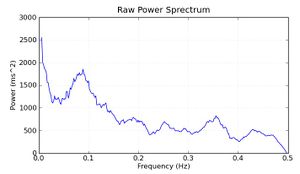BIOSIGNALS
Biosignals can be understood as any activity that measures the expression of a living organism. It is a series of measurements acquired from a vertebrate animal and is a reasonable proxy for underlying biological processes. Also there may be a passive response of the organism to an external physical (e.g. X-ray or ultrasound) or chemical stimulus. Biosignals are classified according to several aspects.
Signal description
- Time domain
- Mathematical function, statistical description
- Periodic function
- Frequency domain - Power spectrum, Fourier transformation
Classification of biosignals by their change over time:
- Deterministic biosignals are usually measured biosignals that illustrate the initial conditions. We can construct a model for them, clearly describing their behaviour in the past and the future. It is obvious that this is only idealization; however the assumption of deterministic system is relatively frequent. Deterministic processes can be divided into:
- Transitional processes - action system, thus measured biosignals that are measured only once.
- Established processes - the system will vary periodically in time or does not change at all.
- Stochastic biosignals include a random component. This property is reflected on the nature of measured biosignal. However stochastic processes can behave according to certain patterns and thus can observe certain regularities.
Classification of biosignals by their generation:
- Passive biosignals are a manifestation of the interaction of the organism with the physical or chemical factors. These biosignals are measured like an excitatory loss of molecules after interaction with the body. A typical example is the interaction of the organism with e.g. X-rays or ultra sound. These will be described in following topics.
- Active biosignals are the manifestations of an activity of an organism, which is the source of energy. They can therefore be sensed passively. A large part of these biosignals is related to change or generation of an electric potential in certain areas and thus can be directly measured like voltage. This is seen in the ECG, but also other electrophysiological signals, such as EEG, EMG and ENG. Many other active biosignals may be associated with mechanical energy - e.g. pressure in the bloodstream, respiratory tract or bladder, strength of muscle contraction or acoustic phenomena accompanying the heart, lungs and intestines.
As we are speaking about electric signals/biosignals, we should explain the measurement process. Let’s start with definition of voltage: The voltage between two ends of a path is the total energy required to move a small electric charge along that path, divided by the magnitude of the charge. On the other hand if it’s related to biosignals sensing: Voltage is electrical potential difference between two points (denoted ∆V and measured in units of electric potential: Volts or Joules per Coulomb).
How can we now measure this potential? We have mentioned topics like action potential, its generation, ion pumps etc. But how can we measure it? First of all we have to have a measuring device. This device can be a simple voltmeter that is just displaying single value. Next step would be a scope or oscilloscope that is displaying the whole curve. Most commonly used device is an A/D converter with suitable resolution connected to PC or an embedded controller with display. However these devices are usually suited for different type of signals with different value or impedance. The question is how to use them for biosignal measurement.
First we have to have electronic connection with body (organ, tissue, cell etc.). For this silver chloride electrodes are used (Figure 3.1 - left). These electrodes contain a silver plate, potassium chloride electrolyte (in biomedical application usually gel) and connecting joints.
These electrodes can be used for single or multiple-use. A single-use electrode usually contains a gel electrolyte and glue that is holding the body surface. Multiple-use electrodes are usually just silver plate with clip and the gel is applied before measurement (Fig. 3.1 - right).
These biosignals are very weak, usually in range of micro to millivolts. For correct use these signals have to be amplified for next processing. Usually for this instrumentation amplifiers are used. These amplifiers amplify the potential difference between the two electrodes. The third electrode is used as reference electrode.


